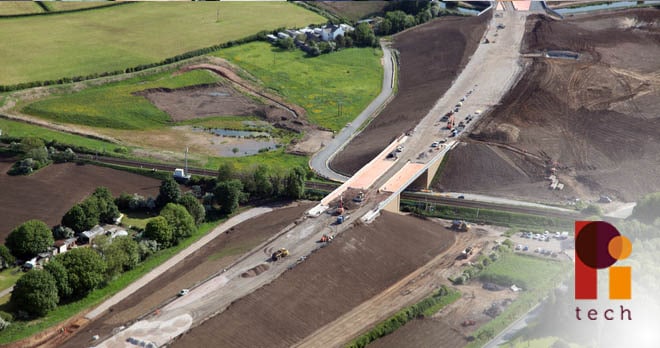Are drones the answer to the UK’s pothole problem?

Drones are being used in increasingly creative ways these days: as mobile phone masts, for deliveries, and even (as we’ve explored previously) as a replacement for firework displays.
However, possibly one of the most innovative uses for drones at the moment is in the detection and repair of potholes. While you will not yet have seen any out on the roads, there is a project in the pipeline that points towards self-sustaining highway maintenance in the not-too-distant future. Given our knowledge of the injuries potholes frequently cause to our personal injury clients, this all makes sense. Not to mention the frustration for commuters affected by the current lengthy road repair process.
Is the future one of ‘self-repairing’ cities?
A major project is currently underway here in the UK, run as a partnership between the universities of Leeds, Birmingham, Southampton and UCL, which aims to create zero disruption from street works in UK cities by 2050. They plan to do this, initially, through three case studies:
- “Perch and Repair”: drones that can perform repair tasks;
- “Fire and Forget”: robots designed to live permanently in utility pipes in order to carry out inspections and maintenance; and
- “Perceive and Patch”: an army of drones performing inspections, diagnostics and repair of defects in the roads.
It is this last study that is of particular interest to us. The idea is to improve quality of life within the UK’s cities by ensuring that infrastructure engineering has less impact on the lives of their citizens, and by reducing the pollution levels created thereby.
How drones may be able to fix potholes
While the project clearly has good intentions, these are unlikely to become a reality unless the technology can be implemented to make it happen. The question therefore is how a drone can be adapted to carry out complex diagnostic and repair work.
The answer is currently being tested at the University of Leeds, where a large drone (created in collaboration with UCL) is capable of scanning cracks in the road surface and then spraying 3D printed asphalt into them. This means that it also acts as a preventative measure against small problems becoming larger ones.
This 3D printed asphalt can be applied with pinpoint accuracy, and in tests was unexpectedly found to be up to nine times more pliable than cast asphalt. This means that repairs carried out by drone are actually likely to last much longer than those carried out by more traditional means: in traffic-dense areas, the more tensile nature of the printed compound means that it is less likely to crack under pressure. Ideally, potholes will therefore be prevented before they have a chance to develop.
Road-repairing drones are also (by design) less disruptive to traffic, and any works can be carried out at night in any event. The repair work can also be carried out in under a minute.
So, are there any drawbacks?
Nonetheless, there are several reasons why these drones have not yet been used in this way. For example, the drone cannot detect cracks in the road autonomously, which is an important next step in the process; in this way, one drone would fly overhead detecting defects, and another would fly down to repair them. Without this ability, the drones are simply another piece of equipment to be operated manually (albeit less intrusive).
It is also unclear how they would operate on motorways. Clearly in urban areas where there is demonstrably less traffic at night, the risks to both drones and drivers is minimised by undertaking the works at that time – this is not the case with motorways, where traffic is denser and driving speeds much higher at all times.
Finally it remains to be seen what these drones will cost and whether they are capable of being cost-effective. It is plausible that they will be, as (in the long term) the initial cost of purchasing the technology is likely to be off-set by the cost of employing people and maintaining large vehicles. However, it is currently difficult to assess what the maintenance and repair costs of the drones themselves will be on top of the purchase costs.
What does this mean for the average road user?
This project clearly has widespread implications, given the number of injuries, particularly to pedestrians and cyclists, that arise out of defects on our roads. Any motorist who has had to pay for car repairs following an encounter with a pothole would also be relieved at the prospect of change. Reducing the number of potholes on the UK’s roads can only improve road safety, and if these works can be carried out at a lower cost and greater speed, whilst at the same time posing less danger to human life, that is all to the good.
However, we are some way off seeing these drones in wider circulation; until the kinks are ironed out as to the logistics of these repairs, the drones cannot be deemed safe for use, and the dream of self-repairing cities will remain just that.